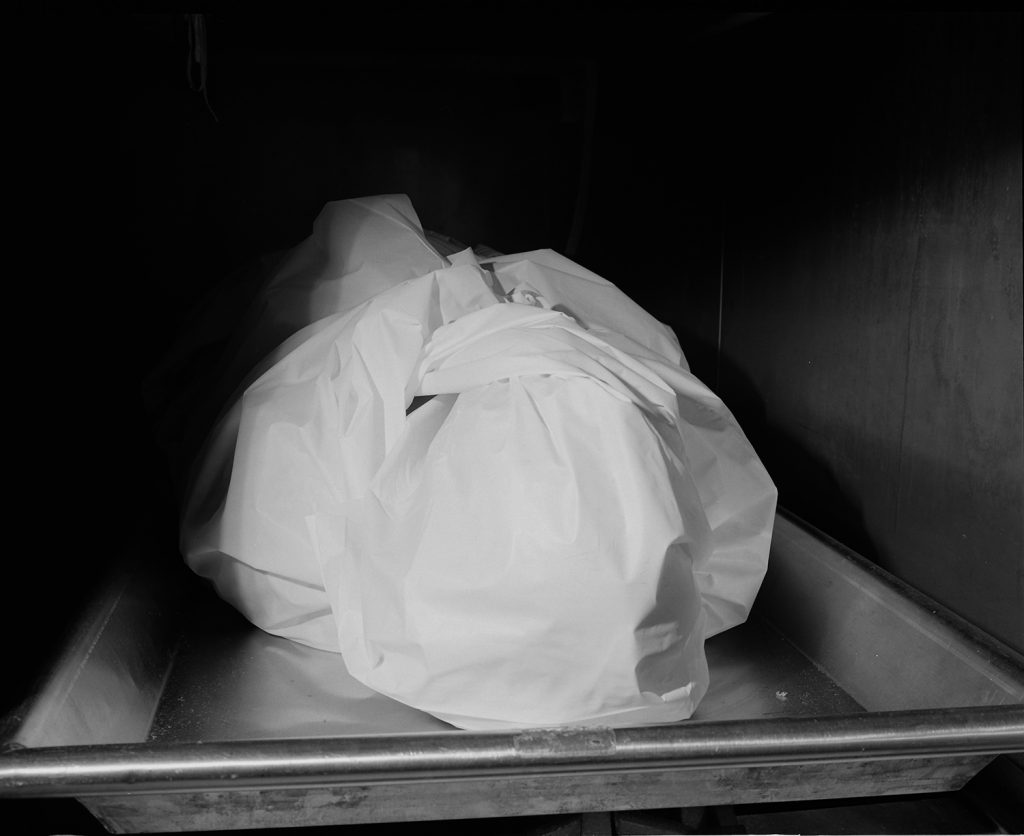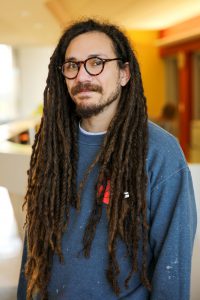Want To See Dead Bodies And Santeria? This Photo Exhibit Has You Covered

PHOTO COURTESY OF TONY CHIRINOS
To most, Santeria and dead bodies seem like an odd pairing.
But a new photo exhibition—Hope & Reality—by Kendall Campus photography professor Tony Chirinos and his former students Ranses Fundora, aims to create a visual narrative of the contrast between religion and death.
Chirinos’ Requiescat in Pace, which means rest in peace in Latin, and Fundora’s project God Boxes are featured at Space Mountain Miami, 738 N.W. 62 St, through Dec. 20.
“The support we received was overwhelming, I couldn’t have been more happy with the results,” Fundora said. “Moments like those remind me why I’m an artist.”
Fundora, who has been a lab technician at Kendall Campus for the past two years, managing the color lab, darkroom and digital lab, made the connection with Space Mountain Miami, a not-for-profit 501(c)(3) organization that provides artists and musicians with space for exhibits and performances.

“It definitely was a lot easier than I thought it was going to be,” said Fundora, who goes by the name Baker. “We just showed [Alicia Hancock Apfel, the owner of Space Mountain] a few samples of what we wanted to show, a written proposal and once she okayed it, it was up to us to hang it the way we saw fit.”
Requiescat in Pace was Chirinos’ thesis project when he was studying for his master of fine arts at Columbia University from 2001 until 2003.
“The project actually started because I was interested in finding out more about my Catholic background,” said Chirinos, who has been a full-time photography professor at Miami Dade College since 2006.
As a medical photographer for Mt. Sinclair Medical Center, he was able to get access to a morgue. But when he first started, problems arose because most people only saw the dead bodies and not the artistry in the photography, such as the framing and timing. After consulting with Columbia University photography professor Thomas Roma, Chirinos asked a coworker to lock him in the same refrigerated compartments where the dead bodies were stored at the morgue.

“I went in and started hearing voices and started feeling people touch me,” Chirinos said. “The scent was unbelievable.”
Chirinos black and white photographs show bodies wrapped in white sheets peeking out of the compartments and resting on steel gurneys.
“Whoever is looking at it, is going to have to confront the fact that you’re going to be lying in one of these sooner or later,” said 51-year-old Chirinos.
Fundora, 28, started God Boxes when he was Chirinos’ student at Kendall Campus from 2008 to 2012. He started referring to the small cement caves where hand held versions of saints are placed as God boxes after he heard a professor use the name.
He wanted his photos to show that Santeria wasn’t just about sacrificing animals. So Fundora drove around Miami, searching for botanicas and befriending people who owned shrines to create colorful photographs of saints, God boxes and religious offerings such as cake and flowers.
“When I tell people that I did a project on Santeria, they expect blood and dead goats and what I was trying to convey to the viewer is that there’s a lot more to Santeria then that aspect of it,” Fundora said.



